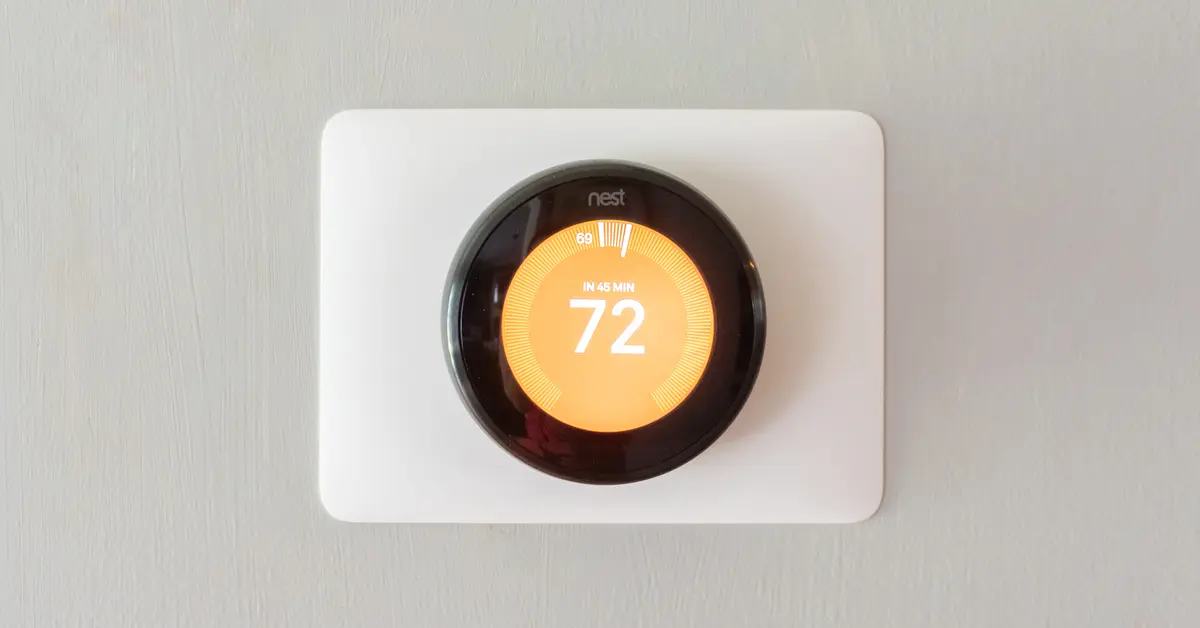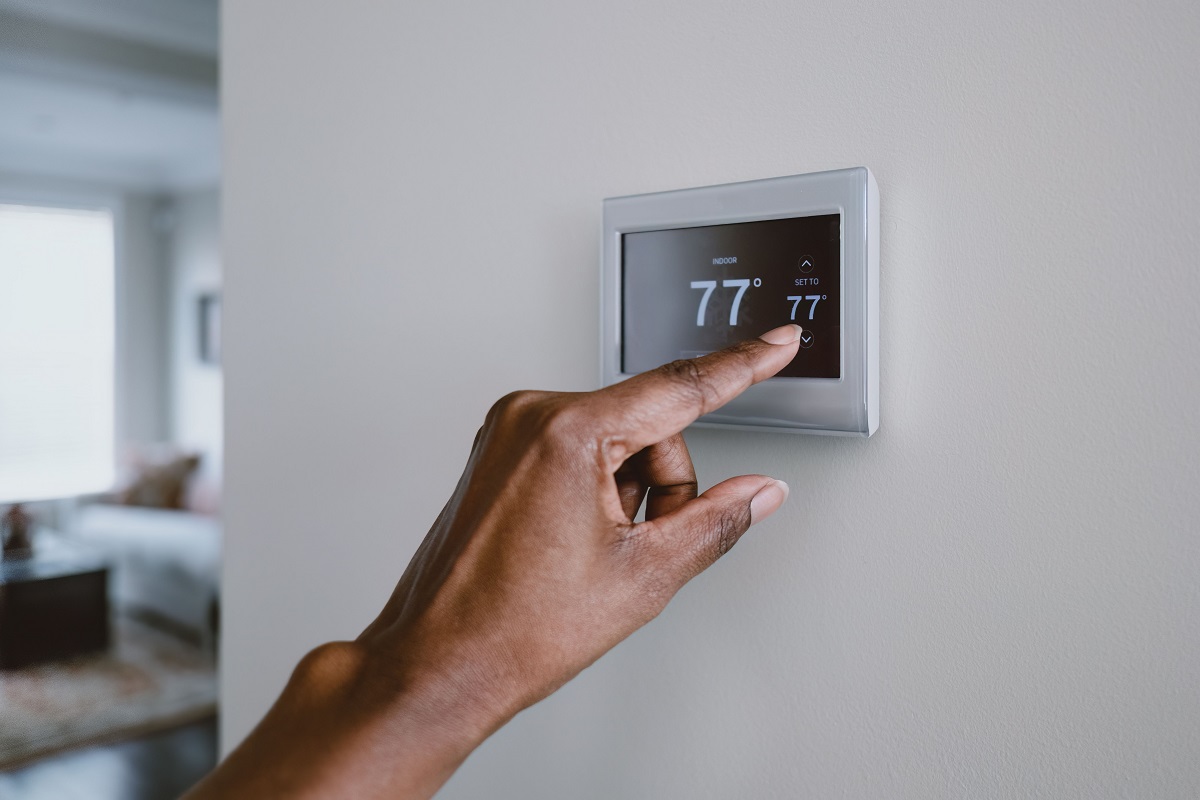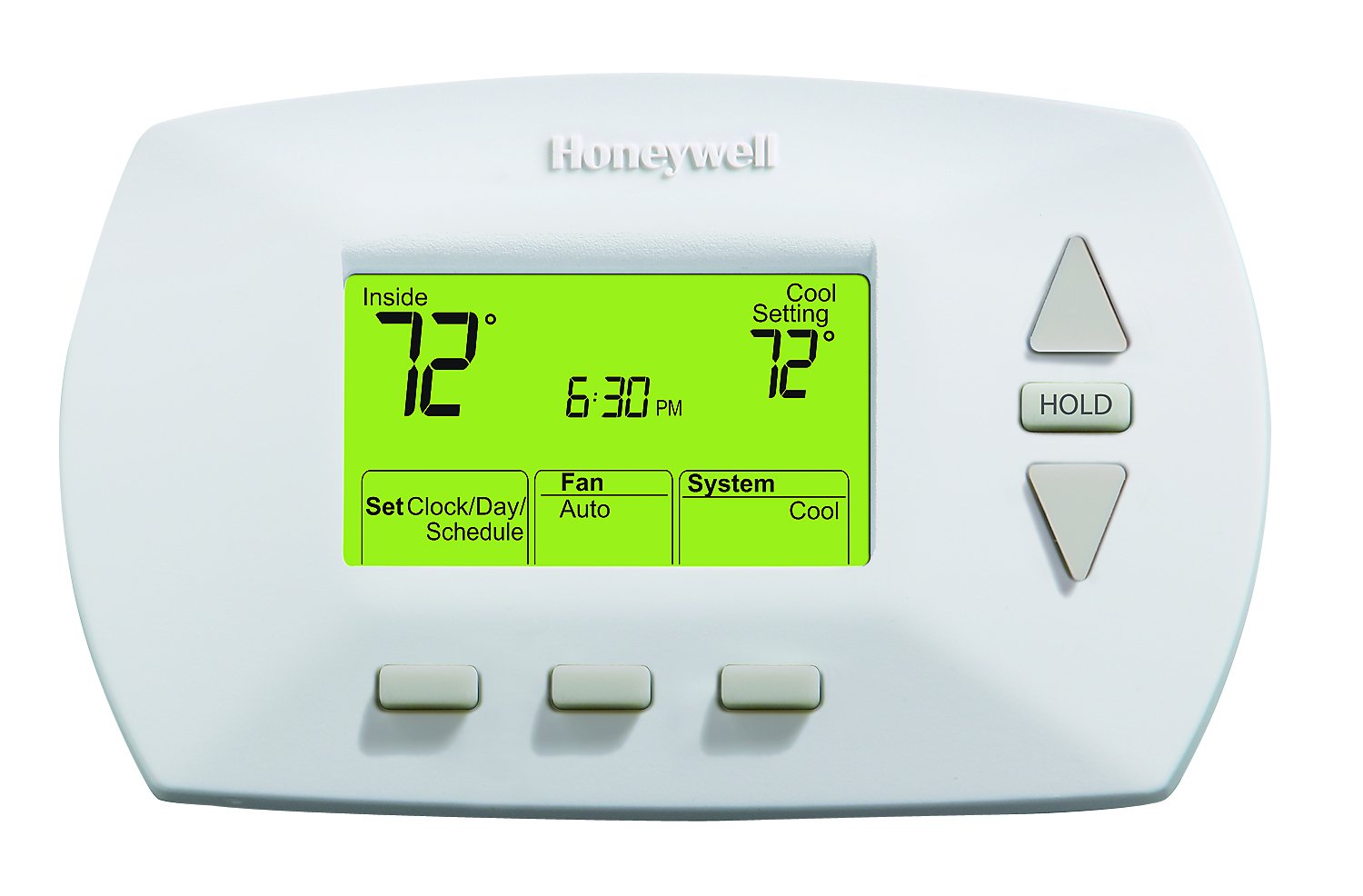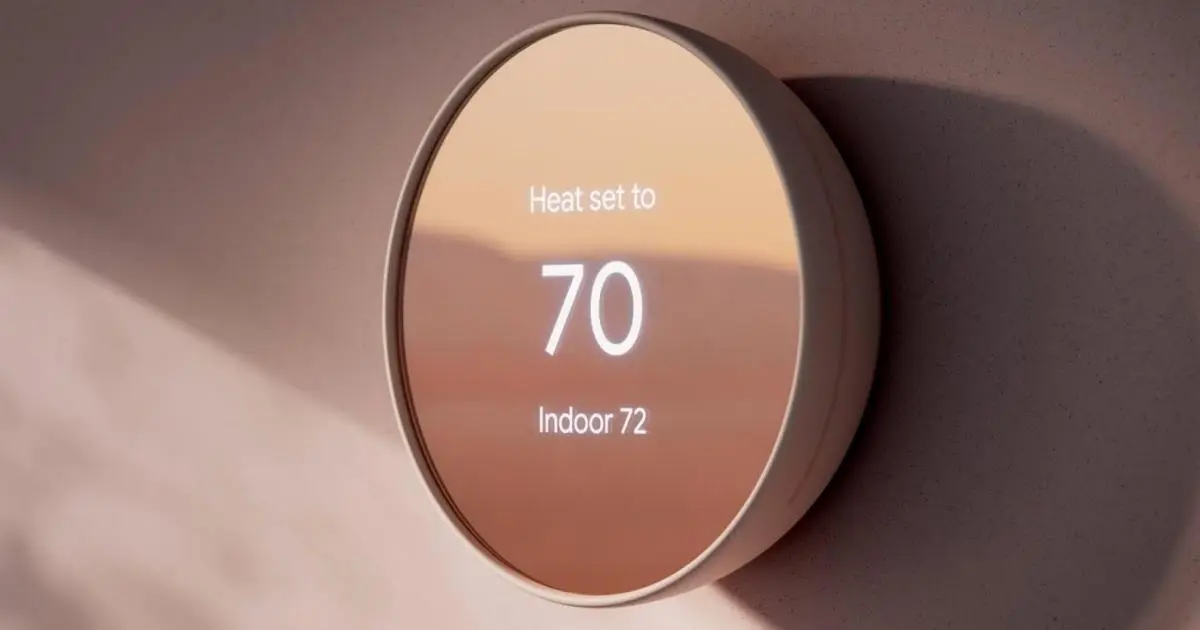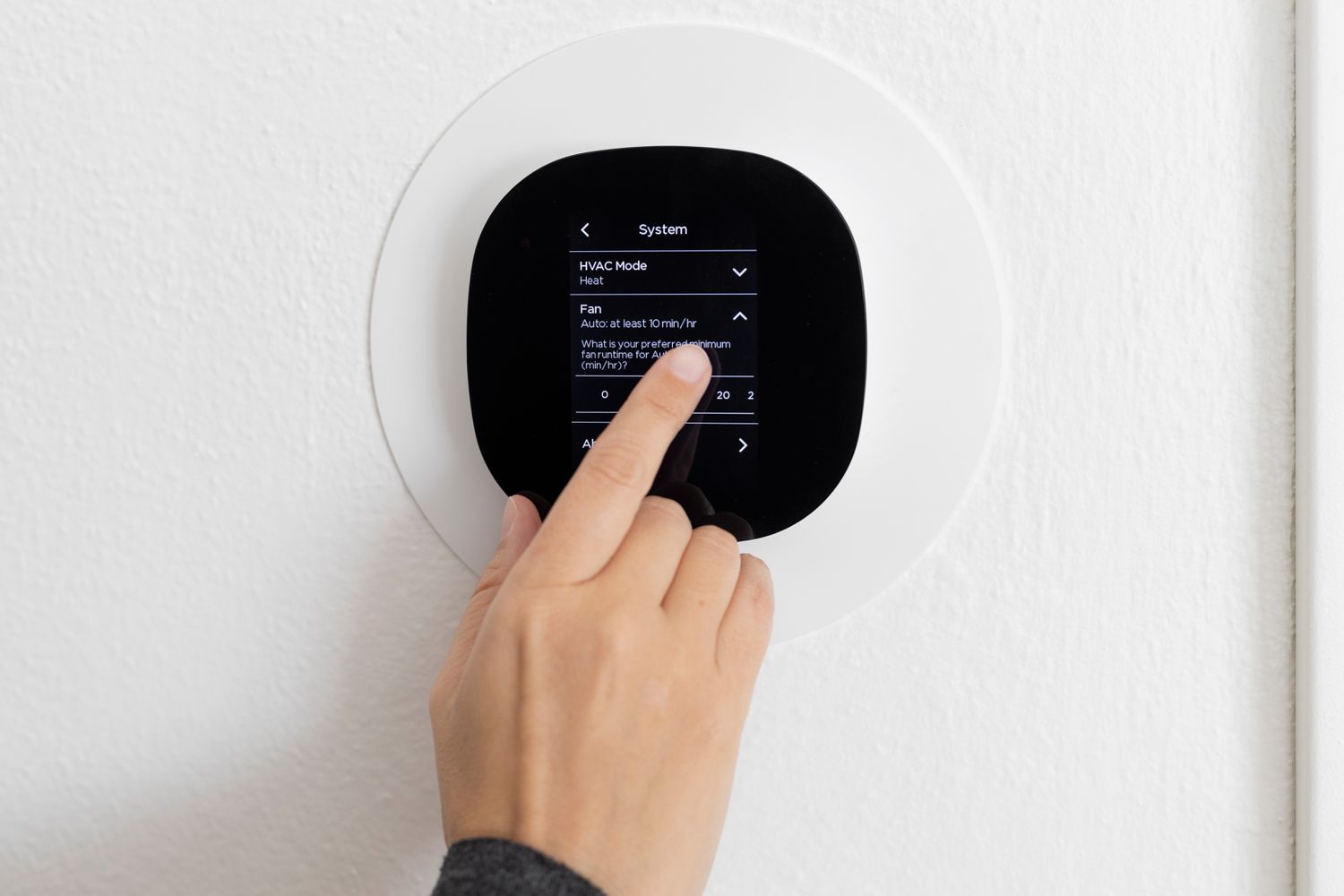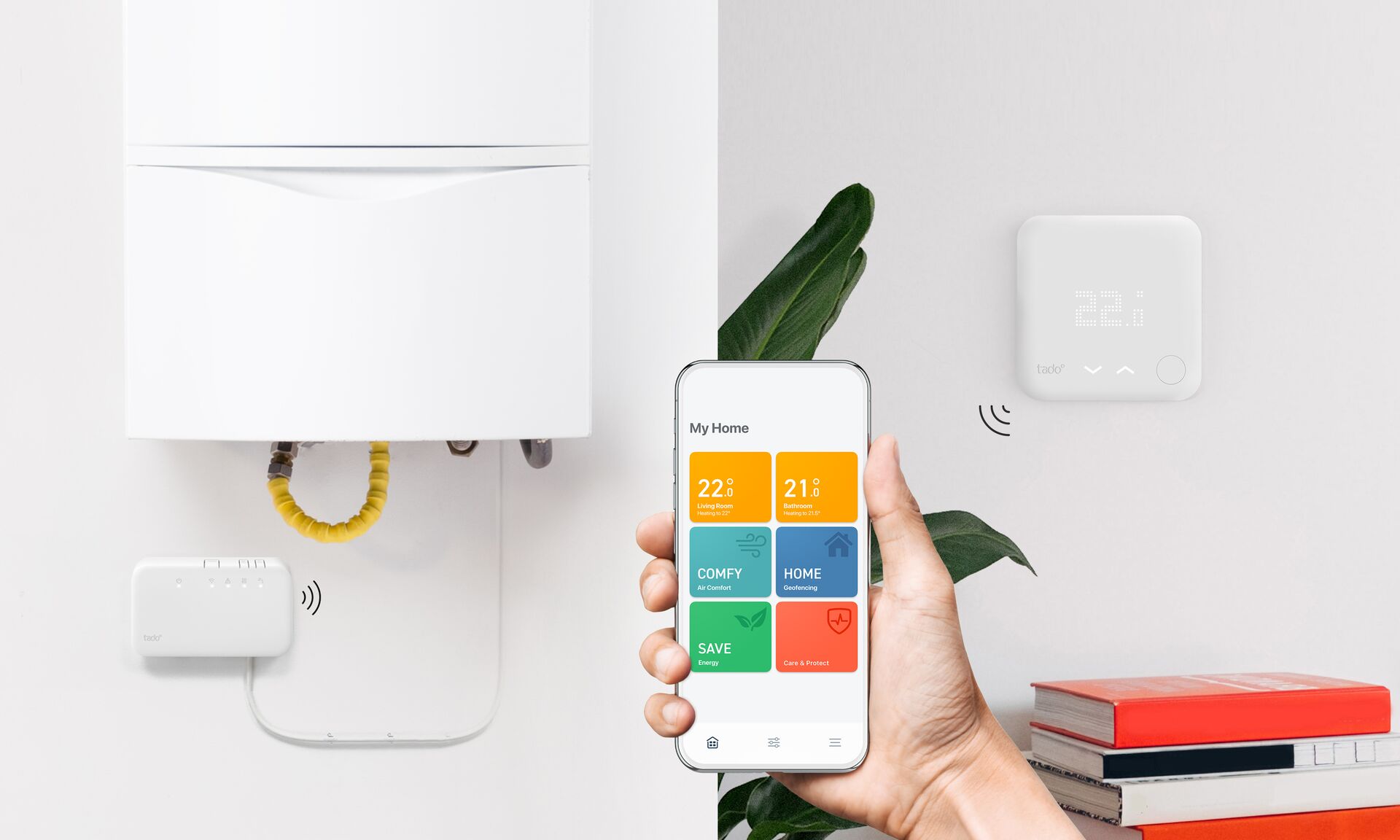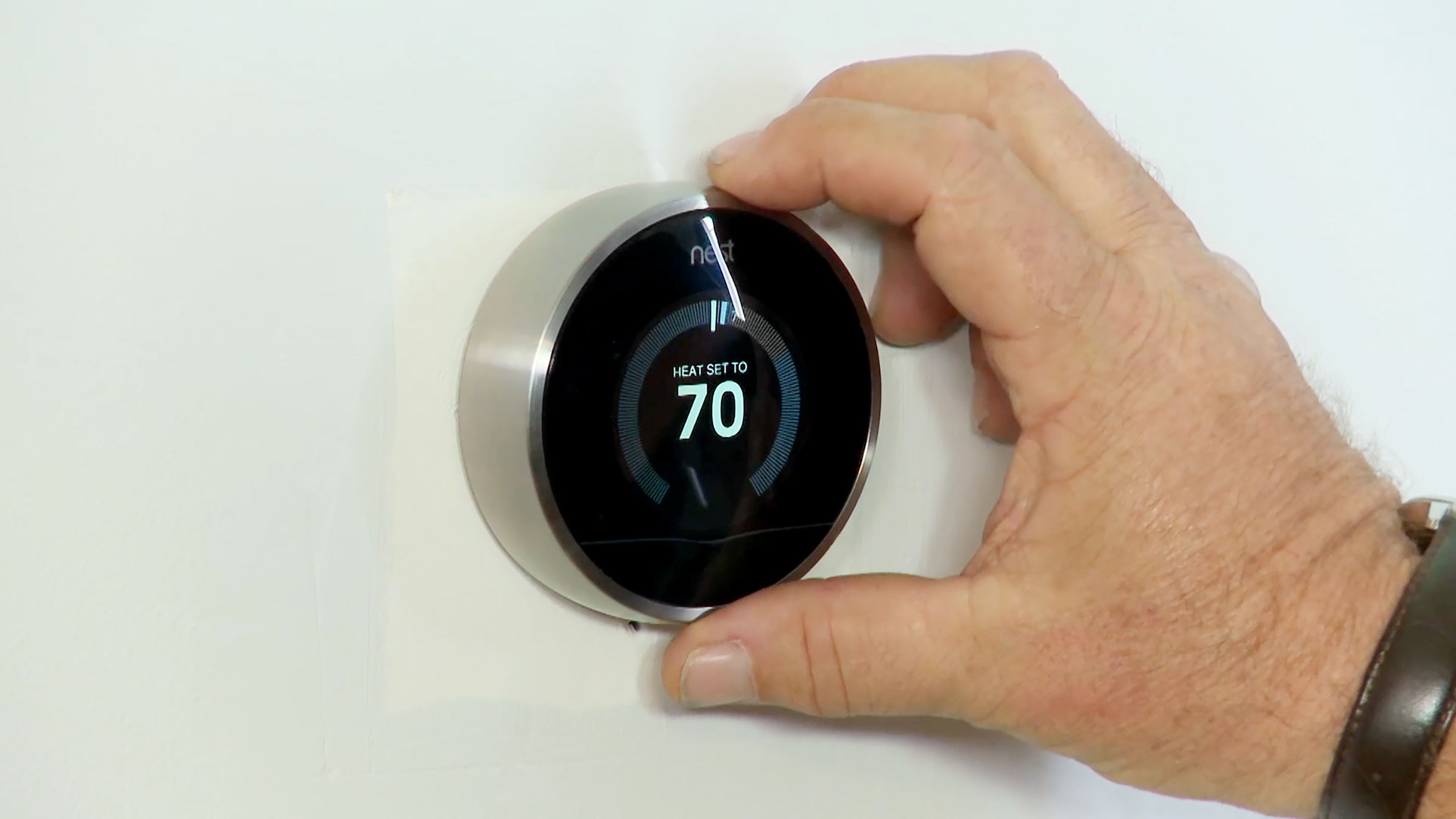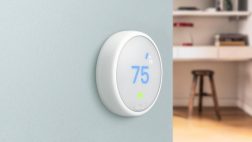Introduction
Welcome to the world of smart thermostats! If you’re looking to upgrade your home HVAC system, a smart thermostat can bring a whole new level of convenience, energy savings, and customization options. With the advancement of technology, these innovative devices have become an essential part of creating a smart and connected home.
But with so many options available in the market, how do you know which smart thermostat is right for your home? It’s important to consider various factors such as compatibility with your HVAC system, energy savings and efficiency, learning capabilities, connectivity, user interface, and overall cost. In this article, we will explore these essential factors to help you make an informed decision.
A smart thermostat is not just a fancy gadget; it’s a smart investment that can have a significant impact on your home’s energy usage and comfort levels. By intelligently controlling the temperature settings, these devices can help you save money on your utility bills while maintaining optimal indoor conditions.
Additionally, smart thermostats usually come with advanced learning capabilities, allowing them to analyze your behavior and create customized heating and cooling schedules. This means that your thermostat learns your preferences and adjusts the temperature accordingly, ensuring maximum comfort and efficiency.
Another crucial aspect to consider is the compatibility of the smart thermostat with your HVAC system. Before making a purchase, you need to check whether the thermostat can work seamlessly with your existing heating and cooling system. Most smart thermostats are designed to be compatible with common systems, but it’s always wise to double-check to avoid any compatibility issues.
Connectivity is another essential feature to look for in a smart thermostat. The ability to control and monitor your thermostat remotely through a smartphone app or connect it to other smart home devices like Amazon Alexa or Google Assistant can greatly enhance your convenience and enable you to create a truly connected home experience.
Factors to Consider when Choosing a Smart Thermostat
When selecting a smart thermostat for your home, there are several key factors to consider that will help you make the right choice. These factors include compatibility with your HVAC system, energy savings and efficiency, learning capabilities, connectivity, user interface, and overall cost.
Firstly, compatibility with your HVAC system is crucial. Not all smart thermostats are compatible with every heating and cooling system. It is essential to check the compatibility of the thermostat with your specific HVAC system to ensure a seamless integration and proper functionality.
Secondly, energy savings and efficiency should be high on your priority list. Smart thermostats are designed to optimize energy usage by learning your temperature preferences and adjusting accordingly. Look for a thermostat that has energy-saving features such as the ability to create schedules, occupancy sensors, and geofencing. These features can help reduce energy wastage and ultimately save you money on your utility bills.
Learning capabilities are another important aspect to consider. Smart thermostats with learning algorithms can adapt to your routines and preferences over time. They can analyze your heating and cooling patterns and automatically adjust the temperature settings to maximize comfort while minimizing energy consumption. Look for a thermostat that offers a learning feature or the ability to create custom schedules based on your lifestyle.
Connectivity is a key feature that distinguishes smart thermostats from traditional ones. Most smart thermostats can be controlled remotely through a smartphone app, allowing you to adjust the temperature settings even when you’re not at home. Additionally, some thermostats offer integration with smart home platforms like Amazon Alexa, Google Assistant, or Apple HomeKit, enabling voice control and seamless integration with other smart devices in your home.
The user interface and controls of a smart thermostat play a significant role in its usability and overall satisfaction. Look for a thermostat with a user-friendly interface and intuitive controls. The display should be clear and easy to read, and the controls should be straightforward and responsive. Some thermostats even offer touchscreen displays or mobile app interfaces for added convenience.
Finally, consider the overall cost of the smart thermostat, including the initial purchase cost as well as any additional installation expenses. While some thermostats may have a higher upfront cost, they may provide more advanced features and energy-saving capabilities that can result in long-term cost savings. Take the time to research and compare different models to find the right balance between features and affordability.
By considering these factors when choosing a smart thermostat, you can ensure that you select the one that best meets your needs and brings optimal comfort and energy efficiency to your home.
Compatibility with your HVAC System
One of the most critical factors to consider when choosing a smart thermostat is its compatibility with your HVAC (Heating, Ventilation, and Air Conditioning) system. Not all smart thermostats are compatible with every type of HVAC system, so it’s essential to ensure a seamless integration between the two.
The first step is to identify the type of HVAC system you have. Common types include forced-air systems, heat pump systems, and radiant heating systems. Each of these systems has specific requirements, and not all smart thermostats are designed to work with every type.
Once you’ve determined your HVAC system type, you can research and narrow down the options that are compatible with it. Most smart thermostat manufacturers provide information on compatibility on their websites or product packaging. Look for specific compatibility information like “works with forced-air systems” or “compatible with heat pumps.”
Some smart thermostats are universal and work with a wide range of HVAC systems, while others are designed for specific types. For example, some thermostats are specifically designed to work with heat pumps and have features optimized for this type of system. These thermostats may have additional settings and algorithms to ensure the best performance and energy efficiency.
In addition to the type of HVAC system, it’s also important to consider the wiring compatibility. Traditional thermostats typically use a simple two-wire system, while smart thermostats require more wires for their advanced features and connectivity. Make sure your HVAC system has enough wires to support the smart thermostat you choose, or consider hiring a professional to install additional wiring if needed.
If you’re unsure about the compatibility of a smart thermostat with your HVAC system, don’t hesitate to reach out to the manufacturer or consult with a professional HVAC technician. They can provide guidance and ensure that the chosen thermostat is compatible and will function properly.
Keep in mind that incompatible thermostats may not work at all or may have limited functionality when connected to your HVAC system. It’s important to ensure compatibility to avoid any issues or frustrations down the line.
Ultimately, choosing a smart thermostat that is compatible with your HVAC system is crucial for a successful integration and optimal performance. Take the time to research and confirm compatibility to ensure a seamless and hassle-free experience when upgrading to a smart thermostat.
Energy Savings and Efficiency
When considering a smart thermostat for your home, one of the key advantages is its ability to help you save energy and improve overall efficiency. Smart thermostats offer a range of features and technologies that can optimize your HVAC system’s performance and reduce energy consumption.
One of the primary ways that smart thermostats contribute to energy savings is through the implementation of customized heating and cooling schedules. These thermostats have the ability to learn your daily routine and adjust temperature settings accordingly. By automatically lowering or raising the temperature when you’re away or asleep, smart thermostats can significantly reduce energy usage and save you money on your utility bills.
Additionally, many smart thermostats come equipped with occupancy sensors or geofencing capabilities. These features detect whether someone is present in the home and adjust the temperature settings accordingly. If no one is home, the thermostat can enter an energy-saving mode or adjust to a more efficient temperature setting to avoid wasting energy on an empty house.
Some smart thermostats also provide energy usage reports and insights, allowing you to track and monitor your energy consumption. These reports can help you identify energy-saving opportunities and make adjustments to further optimize your HVAC system’s performance.
Another energy-saving feature found in some smart thermostats is weather-based programming. By accessing local weather data, the thermostat can adjust temperature settings based on predicted outdoor conditions. For example, if it’s a sunny day, the thermostat may slightly increase the temperature setting to take advantage of natural heat gain, reducing reliance on the HVAC system.
Furthermore, advanced algorithms and machine learning capabilities enable smart thermostats to continuously analyze and optimize the temperature settings based on various factors such as humidity, outdoor temperature, and user preferences. By fine-tuning the HVAC system’s operation, smart thermostats maximize comfort while minimizing energy usage.
It’s important to note that the actual energy savings achieved with a smart thermostat will depend on various factors, including your existing HVAC system, climate, and occupancy patterns. However, studies have shown that smart thermostats can lead to significant energy savings, with potential reductions in heating and cooling costs ranging from 10% to 30%.
By investing in a smart thermostat and taking advantage of its energy-saving features, you can play a part in reducing your carbon footprint and contribute to a more sustainable future. Furthermore, the energy savings you’ll achieve can help offset the initial cost of the thermostat, making it a worthwhile investment in the long run.
Learning Capabilities and Customization Options
One of the standout features of smart thermostats is their learning capabilities and customization options. These advanced functionalities allow the thermostat to adapt to your lifestyle and preferences, providing personalized comfort and maximizing efficiency.
Smart thermostats equipped with learning algorithms can analyze and track your temperature preferences and schedule patterns over time. As you make adjustments to the thermostat or manually modify the temperature settings, the device learns your preferences and begins to anticipate your needs. This means that over time, the thermostat will automatically adjust the temperature to your desired comfort level without you having to manually make changes.
Customization options go hand in hand with learning capabilities. A good smart thermostat will provide you with a range of customization options to personalize your heating and cooling experience. This includes the ability to create custom schedules based on your daily routine, temperature presets for different times of the day, and even specific settings for different rooms or zones in your home.
Advanced smart thermostats also offer features like adaptive recovery or smart response. These features use historical data and learning algorithms to adjust the timing of temperature changes to ensure that your home is at the desired temperature at the scheduled time. This means that the thermostat will learn how long it takes your HVAC system to reach the desired temperature and will start the heating or cooling process in advance to achieve optimal comfort.
For those who prefer manual control, smart thermostats also offer a range of options. Most models come with mobile apps that allow you to adjust the temperature settings remotely from your smartphone or tablet. This can be particularly useful if you want to return to a pre-cooled or pre-heated home after being away. Additionally, some thermostats offer voice control options through integration with virtual assistants like Amazon Alexa or Google Assistant, making it even more convenient to adjust the temperature settings with a simple voice command.
Furthermore, smart thermostats often provide energy-saving tips and insights based on your usage patterns. They offer suggestions on how to optimize your HVAC system’s performance and reduce energy consumption. These tips can range from reminding you to change air filters to optimizing temperature settings to save energy without sacrificing comfort.
With their learning capabilities and customization options, smart thermostats provide a level of comfort and convenience that goes beyond traditional thermostats. Whether you prefer automated temperature adjustments based on your preferences or the ability to control the thermostat manually, a smart thermostat can adapt to your needs and provide a tailored experience.
Connectivity and Smart Home Integration
In the era of smart homes and connected devices, the ability to connect and integrate your smart thermostat with other smart home devices is a crucial factor to consider when choosing a smart thermostat. Connectivity and smart home integration offer a wide range of benefits and convenience for controlling and monitoring your home’s temperature remotely.
Most smart thermostats come with built-in Wi-Fi connectivity, allowing them to connect to your home’s internet network. This connection enables you to control and monitor your thermostat through a dedicated smartphone app or web portal, regardless of your location. Whether you’re at work, on vacation, or simply lounging on the couch, you can adjust the temperature settings and monitor energy usage with ease.
Smart thermostats with connectivity also provide the advantage of over-the-air updates. Manufacturers frequently release firmware updates to improve the functionality, performance, and security of their devices. With a connected smart thermostat, you can receive these updates automatically, ensuring that your thermostat is always up to date with the latest features and enhancements.
Integration with popular smart home platforms such as Amazon Alexa, Google Assistant, or Apple HomeKit is another key aspect to consider. This enables you to control your thermostat using voice commands, making the interaction even more convenient and hands-free. You can simply say “Alexa, set the temperature to 72 degrees” or “Hey Google, lower the thermostat by 2 degrees”, and the thermostat will respond accordingly.
Furthermore, smart home integration allows you to create complex automation routines and scenarios. For example, you can set up a routine that automatically adjusts the temperature when you activate a certain scene or when you leave or arrive at home using geofencing. This integration with other smart devices in your home opens up endless possibilities for creating a truly connected and synchronized living environment.
For those who enjoy data and analytics, smart thermostats with connectivity often provide detailed energy usage reports and insights. These reports give you a breakdown of your energy consumption patterns, allowing you to identify areas where you can make adjustments to further optimize your energy usage. Some thermostats even offer recommendations and tips on how to reduce energy consumption based on your usage data.
Connecting your smart thermostat to other smart home devices like smart blinds or smart lighting can also contribute to energy efficiency. For example, if your thermostat detects that the home is empty, it can prompt the blinds to close or the lights to turn off, reducing unnecessary energy usage.
In summary, the connectivity of a smart thermostat opens up a world of possibilities for remote control, automation, and integration with other smart devices in your home. This connectivity and smart home integration help to enhance convenience, control, and energy efficiency, allowing you to create a truly interconnected and intelligent living space.
User-Friendly Interface and Controls
The user interface and controls of a smart thermostat play a significant role in its usability and overall satisfaction. A well-designed and user-friendly interface ensures that you can easily navigate and adjust settings, providing a seamless and intuitive experience.
One of the primary considerations when it comes to the user interface is the display. The display should be clear, legible, and easy to read from a distance. Look for smart thermostats with backlit displays or high-resolution screens that provide crisp and vivid information about temperature, humidity, and other relevant data.
Touchscreen displays are becoming increasingly common in smart thermostats, offering a more interactive and modern user experience. With a touchscreen display, you can tap, swipe, and scroll through menus and settings, making adjustments with a simple touch of your finger. This intuitive interface mimics the experience of using a smartphone or tablet, making it familiar and easier to navigate.
Additionally, some smart thermostats provide physical buttons or dials in conjunction with or instead of a touchscreen. These buttons and dials can offer a tactile experience and provide a backup option for controlling the thermostat, especially in cases where the touchscreen may be less responsive or if you prefer the feel of physical controls.
The navigation and menu structure of the thermostat’s interface should be logical and straightforward. The menus should be organized in a way that makes it easy to access and adjust different settings, such as temperature, scheduling, energy-saving features, and more. Look for smart thermostats that provide clear and intuitive icons and labels to guide you through the settings and options.
Some smart thermostats also offer mobile apps or web portals that allow you to control the thermostat remotely from your smartphone, tablet, or computer. The mobile app interface should be user-friendly, responsive, and intuitive, providing a seamless experience whether you’re adjusting the temperature while on the go or accessing advanced settings from the comfort of your sofa.
Furthermore, voice control options are becoming increasingly popular in smart thermostats. Integration with virtual assistants like Amazon Alexa or Google Assistant enables you to control the thermostat with simple voice commands. This hands-free operation adds another layer of convenience and ease of use, allowing you to adjust the temperature settings without even having to touch the thermostat.
Finally, consider the overall intuitiveness and ease of setup of the smart thermostat. Manufacturers should provide clear and comprehensive installation instructions, and the setup process should be straightforward, even for those who may not be technically inclined. The user manual or online resources should be accessible and provide answers to common questions or troubleshooting steps.
When choosing a smart thermostat, take the time to research and read user reviews to gauge the overall user experience and satisfaction with the interface and controls. A user-friendly interface and intuitive controls are essential for ensuring that you can easily and conveniently manage your home’s temperature settings.
Price and Installation Costs
When considering a smart thermostat for your home, it’s important to factor in the price of the device as well as any potential installation costs. Understanding the costs associated with a smart thermostat will help you make an informed decision and stay within your budget.
Smart thermostat prices can vary depending on the brand, model, and features included. Generally, you can find smart thermostats in a range of prices, from budget-friendly options to more premium models with advanced features. It’s important to assess your specific needs and preferences to determine the level of functionality and features required for your home.
In addition to the upfront cost of the thermostat, you should also consider any potential installation costs. While some homeowners may be comfortable installing the thermostat themselves, others may prefer to hire a professional technician for proper installation. The installation cost can vary based on factors such as the complexity of your HVAC system, any required wiring modifications, and the labor rates in your area.
It’s worth noting that some smart thermostat manufacturers offer professional installation services as an additional option. This can provide peace of mind knowing that the thermostat will be installed correctly and properly integrated with your HVAC system.
When comparing prices, it’s important to weigh the cost against the features and benefits offered by the smart thermostat. A higher-priced model may provide more advanced energy-saving features, compatibility with a wider range of HVAC systems, or seamless integration with other smart home devices. On the other hand, a more affordable smart thermostat may still offer basic features and functionality that meet your needs.
Additionally, consider the long-term cost savings that can be achieved with a smart thermostat. A smart thermostat can help optimize energy usage and potentially reduce your overall heating and cooling costs. Over time, the energy savings can offset the initial cost of the device, making it a worthwhile investment from a financial standpoint.
It’s crucial to research and compare different brands and models to find the right balance between price and functionality. Read customer reviews and consider factors such as warranty coverage, customer support, and the reputation of the manufacturer. This will ensure that you’re getting a reliable and durable smart thermostat that will last for years to come.
Remember that the price and installation costs should be just one aspect of your decision-making process. Take into account other factors such as compatibility with your HVAC system, energy-saving features, user interface, and connectivity options to choose the smart thermostat that best meets your needs and provides long-term value.
Popular Smart Thermostat Brands and Models
When it comes to choosing a smart thermostat, there are several well-known brands and models that stand out in the market. These brands have gained popularity due to their reliability, features, and user-friendly interfaces. Let’s take a look at some of the most popular smart thermostat brands and the models they offer:
Nest
Nest is one of the leaders in the smart thermostat industry, known for its sleek design and advanced features. The Nest Learning Thermostat is a flagship model that uses machine learning to adapt to your preferences and create customized schedules. It also offers energy-saving features like occupancy detection and advanced compatibility with HVAC systems.
Ecobee
Ecobee is another top contender, offering smart thermostats that provide excellent energy-saving capabilities and a user-friendly experience. The Ecobee SmartThermostat with Voice Control is a popular model that features a responsive touchscreen display, integration with virtual assistants, and remote sensors to monitor temperature in different rooms. It also offers energy reports and advanced scheduling options.
Honeywell
Honeywell has been a trusted name in the thermostat industry for many years, and their smart thermostats continue to deliver reliable performance. The Honeywell Home T9 Smart Thermostat is a highly regarded model that offers features like geofencing, room sensor compatibility, and compatibility with popular smart home platforms. It also provides energy usage insights and customizable scheduling options.
Google (formerly known as Google Nest)
Google Nest, formerly known as Nest, offers a range of smart thermostats that integrate seamlessly with other Google Nest devices. The Google Nest Thermostat boasts a sleek, minimalist design and offers features like temperature scheduling, energy-saving recommendations, and integration with Google Assistant for voice control.
Emerson
Emerson is a brand that focuses on delivering reliable and technologically advanced thermostats. The Emerson Sensi Smart Thermostat is a popular choice known for its easy installation process and compatibility with a wide range of HVAC systems. It offers remote control through a mobile app, intelligent scheduling, and energy usage reports.
These are just a few examples of popular smart thermostat brands and models, and there are many other options available in the market. When choosing a smart thermostat, it’s important to consider your specific needs, compatibility with your HVAC system, and desired features. Reading customer reviews and researching the brands and models will help you find the perfect smart thermostat for your home.
Conclusion
Choosing the right smart thermostat for your home is an important decision that can enhance your comfort, save energy, and improve the overall efficiency of your HVAC system. By considering factors such as compatibility with your HVAC system, energy savings and efficiency, learning capabilities, connectivity, user interface, and price, you can make an informed decision that best suits your needs and preferences.
When it comes to compatibility, ensure that the smart thermostat you choose is compatible with your specific HVAC system to ensure seamless integration and optimal performance. Additionally, prioritize energy savings and efficiency by selecting a smart thermostat that offers features like customized schedules, occupancy sensors, and learning capabilities to optimize your energy usage and reduce utility costs.
Connectivity and smart home integration provide convenience and control over your thermostat by enabling remote access and integrating with other smart devices in your home. This allows you to adjust settings, monitor energy usage, and create automation routines from anywhere, using voice commands or mobile apps.
The user interface and controls of a smart thermostat should be intuitive and user-friendly, with clear displays, straightforward navigation, and options for customization. A well-designed interface ensures that you can easily manage temperature settings and access advanced features without frustration.
Consider the price of the smart thermostat, including any potential installation costs, and weigh it against the features and benefits offered. While price is important, it’s crucial to also consider the long-term cost savings and energy efficiency that a smart thermostat can provide.
Popular smart thermostat brands like Nest, Ecobee, Honeywell, Google, and Emerson offer a range of models with different features and capabilities. Researching customer reviews and understanding the reputation of the brands can aid in finding a reliable and high-performing smart thermostat.
In conclusion, selecting the right smart thermostat involves careful consideration of factors such as compatibility, energy efficiency, connectivity, user interface, and overall cost. By making an informed decision, you can enhance your home’s comfort, save energy, and contribute to a more sustainable and connected living space.







